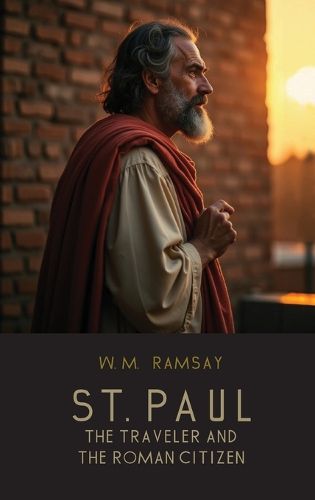Readings Newsletter
Become a Readings Member to make your shopping experience even easier.
Sign in or sign up for free!
You’re not far away from qualifying for FREE standard shipping within Australia
You’ve qualified for FREE standard shipping within Australia
The cart is loading…






This title is printed to order. This book may have been self-published. If so, we cannot guarantee the quality of the content. In the main most books will have gone through the editing process however some may not. We therefore suggest that you be aware of this before ordering this book. If in doubt check either the author or publisher’s details as we are unable to accept any returns unless they are faulty. Please contact us if you have any questions.
Sir William Mitchell Ramsay (1851-1939) was a Scottish archaeologist and New Testament scholar renowned for his work on the historical geography of Asia Minor and the early Christian world. Educated at the University of Aberdeen and later at Oxford, Ramsay initially approached biblical texts with skepticism but came to regard them as historically reliable through his extensive fieldwork. His groundbreaking archaeological expeditions across modern-day Turkey provided valuable insights into the context of the New Testament, particularly the journeys of the Apostle Paul. Ramsay's meticulous research and publications earned him international recognition and a knighthood in 1906 for his contributions to archaeology and biblical studies.
St. Paul the Traveler and the Roman Citizen is one of Ramsay's most influential works, offering a detailed reconstruction of the Apostle Paul's missionary journeys against the backdrop of the Roman Empire. Drawing on his firsthand archaeological discoveries and deep knowledge of ancient history, Ramsay presents Paul not only as a religious figure but as a shrewd Roman citizen navigating the political and cultural complexities of his time. The book affirms the historical accuracy of the Acts of the Apostles, portraying Paul's travels with scholarly rigor and vivid detail. It remains a foundational text for readers interested in early Christianity, historical geography, and classical studies.
$9.00 standard shipping within Australia
FREE standard shipping within Australia for orders over $100.00
Express & International shipping calculated at checkout
This title is printed to order. This book may have been self-published. If so, we cannot guarantee the quality of the content. In the main most books will have gone through the editing process however some may not. We therefore suggest that you be aware of this before ordering this book. If in doubt check either the author or publisher’s details as we are unable to accept any returns unless they are faulty. Please contact us if you have any questions.
Sir William Mitchell Ramsay (1851-1939) was a Scottish archaeologist and New Testament scholar renowned for his work on the historical geography of Asia Minor and the early Christian world. Educated at the University of Aberdeen and later at Oxford, Ramsay initially approached biblical texts with skepticism but came to regard them as historically reliable through his extensive fieldwork. His groundbreaking archaeological expeditions across modern-day Turkey provided valuable insights into the context of the New Testament, particularly the journeys of the Apostle Paul. Ramsay's meticulous research and publications earned him international recognition and a knighthood in 1906 for his contributions to archaeology and biblical studies.
St. Paul the Traveler and the Roman Citizen is one of Ramsay's most influential works, offering a detailed reconstruction of the Apostle Paul's missionary journeys against the backdrop of the Roman Empire. Drawing on his firsthand archaeological discoveries and deep knowledge of ancient history, Ramsay presents Paul not only as a religious figure but as a shrewd Roman citizen navigating the political and cultural complexities of his time. The book affirms the historical accuracy of the Acts of the Apostles, portraying Paul's travels with scholarly rigor and vivid detail. It remains a foundational text for readers interested in early Christianity, historical geography, and classical studies.